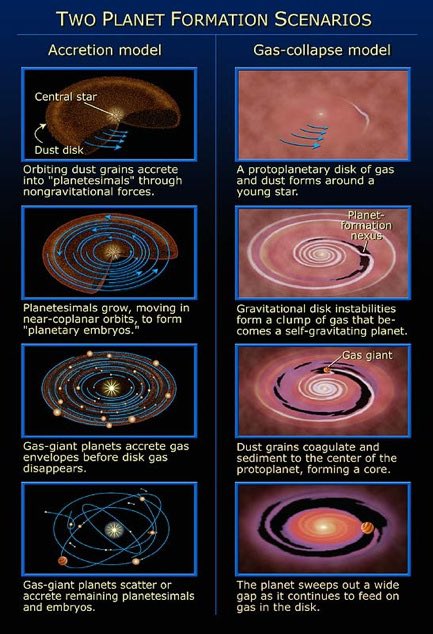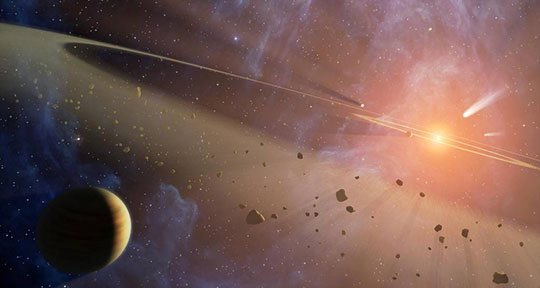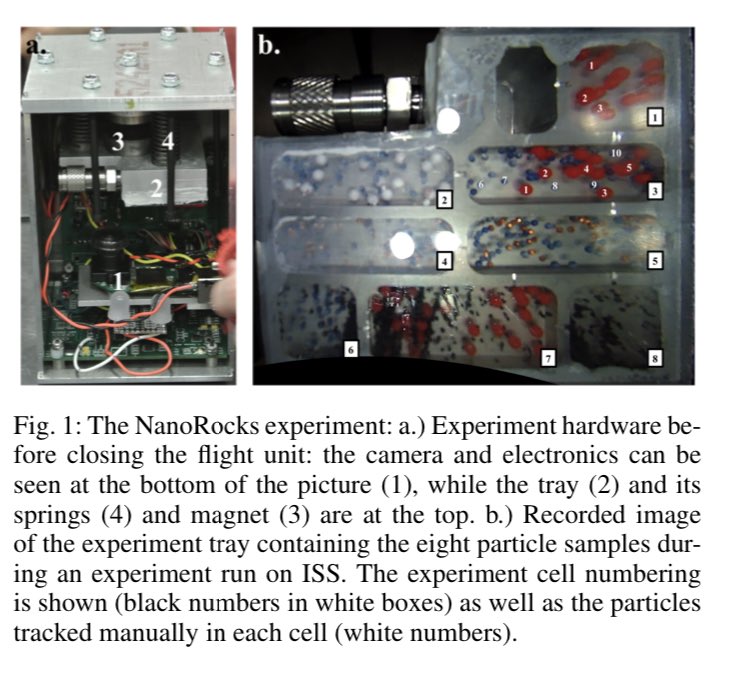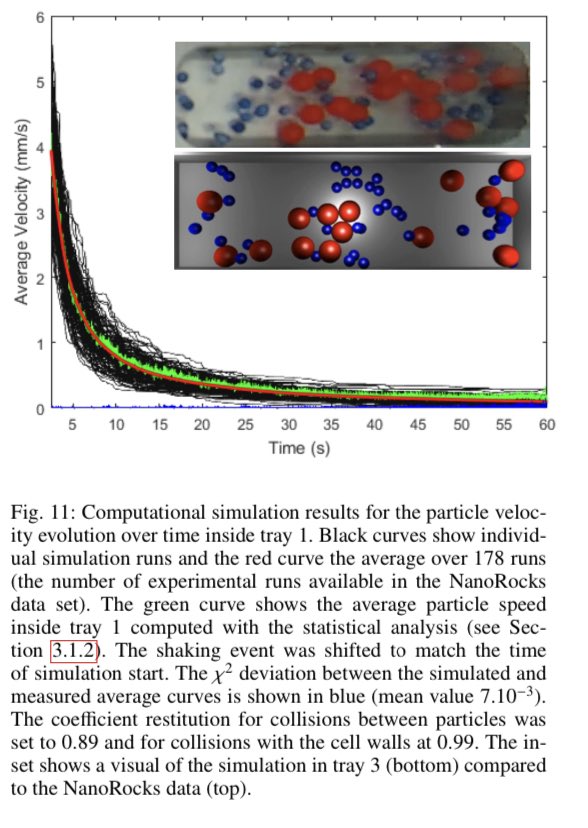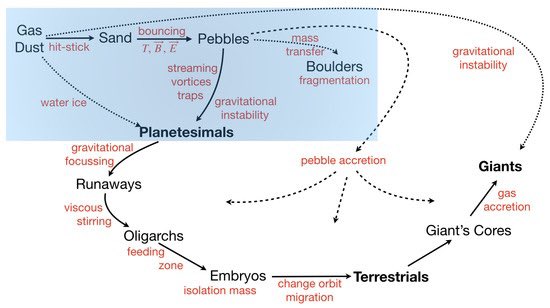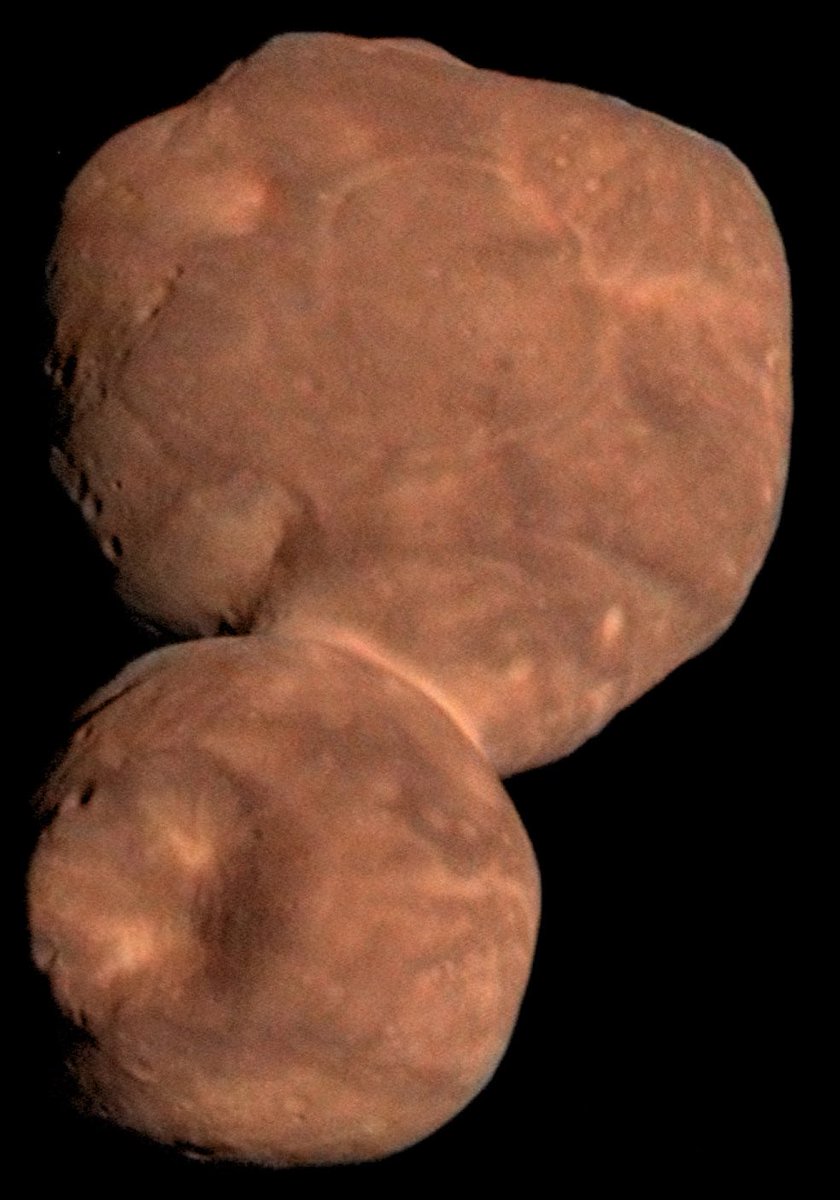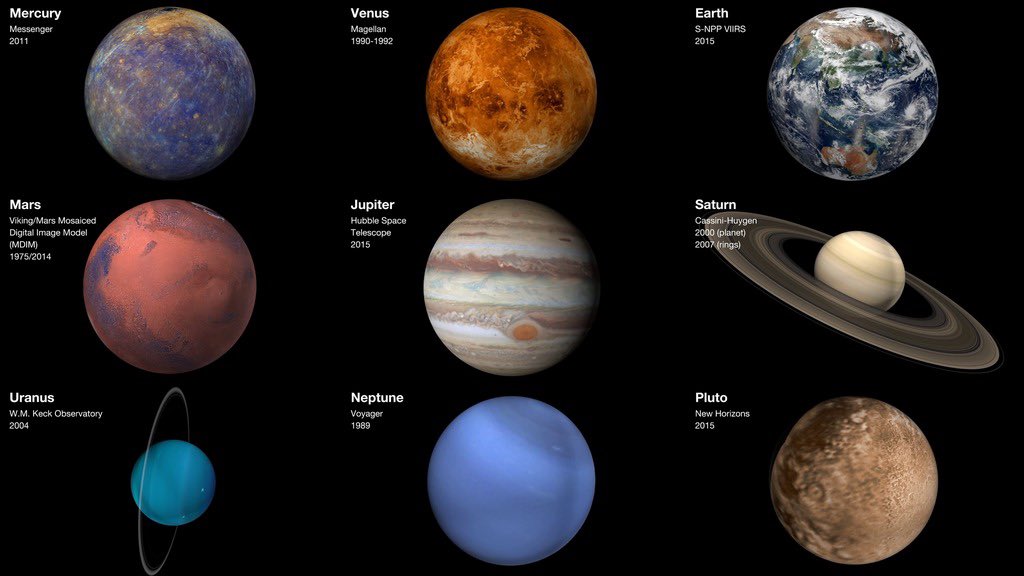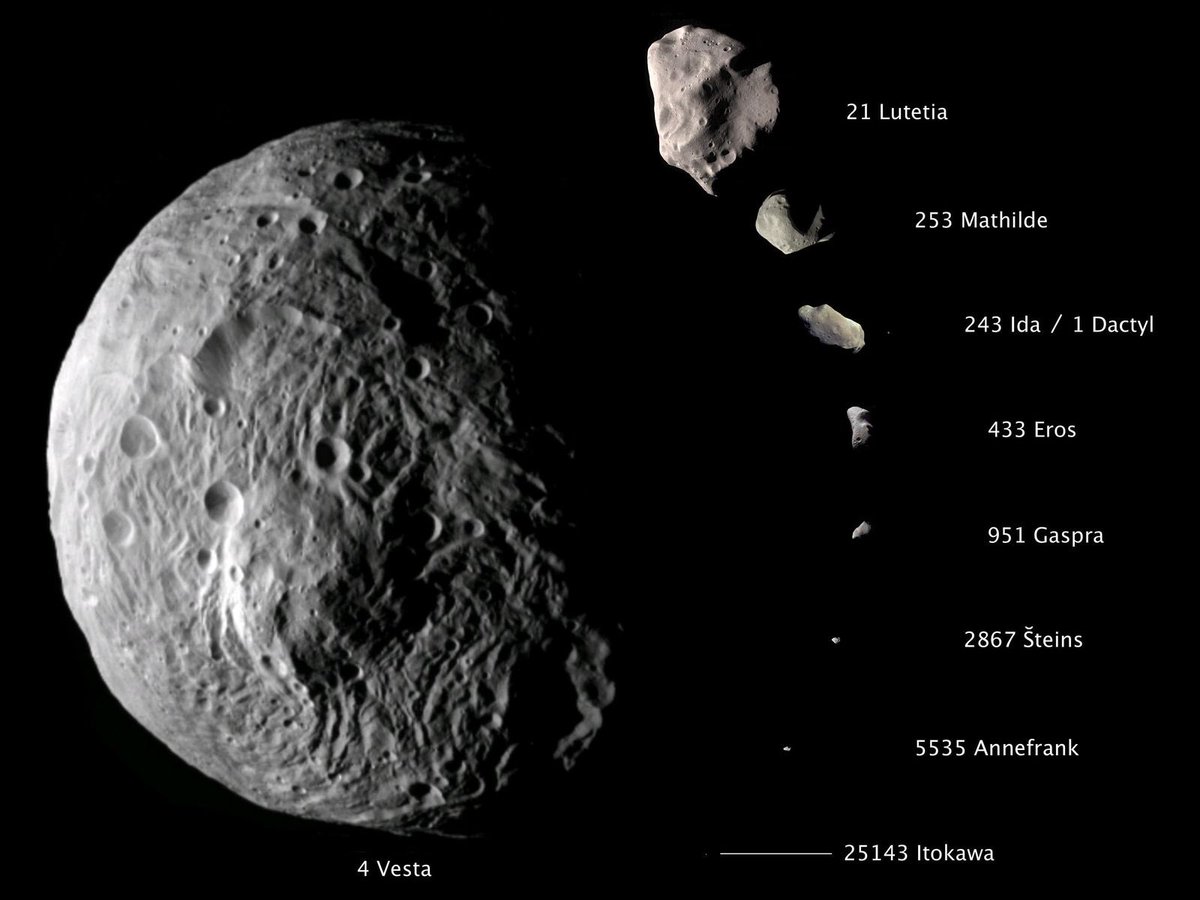Super interesting paper on the role of magnetic fields in the solar nebula helping planets to form (paywalled but the abstract is open access so check it out!). For context, the processes of planet formation are not entirely solved. Short thread 1/N https://twitter.com/lucaplanets/status/1361350669458944000
2/ There are two overall theories of planet formation. One is “Top-Down” (Gas-collapse, or Disk Instability), and the other is “Bottom-Up” (Accretion). Image Source: http://cosmicdiary.org/geminiplanetimager/2015/09/16/what-do-we-know-about-planet-formation/
3/ Probably both of these mechanisms operated in the early Solar System, but we don’t know how much of each, and we don’t know the whole story of either model, and so we can’t explain everything we see in the Solar System, yet. For example, one problem in accretion theory is...
4/ ...the “pebble barrier”. Gas can collect into dust. When dust collides it “flocculates” & sticks because they aren’t “bouncy” but they are “sticky”. But when they get up to pebble sizes, then they *are* bouncy and they don’t have enough gravity yet, so how do they grow more?
5/ If a planetesimal can somehow grow bigger, then it eventually gets enough gravity to overcome the bounciness and then we know how it can keep growing even larger. Images from Brisset et al. showing Space Station experiments of this pebble barrier. https://arxiv.org/pdf/1909.06417.pdf
6/ Here is a great graphic by Gerard Wurm showing the different possible pathways by which a planet can grow. The uppermost path swooping along the top and right is “Top-Down” (Gas-collapse). Most of the other paths are “Bottom-Up” (Accretion). https://www.mdpi.com/2076-3263/8/9/310/htm
7/ You see in that picture ^^ that there are two pathways to get to gas giants. That’s why one is Top-Down and the other is Bottom-Up.
8/ We used to think that Top-Down only goes directly to gas giants, so all the smaller planets had to form by Bottom-Up pathways. This new article says that magnetic fields in the disk of gas around the early Sun might have changed that. https://www.nature.com/articles/s41550-020-01297-6
9/ It says that smaller planets — by a factor of 10 smaller in size — could have formed by direct gas instability, Top-Down. Recently, the flyby of Arrokoth also shed new insight into planet formation. https://www.sciencedaily.com/releases/2020/02/200213164317.htm
10/ Planetary scientist Will Grundy reported, "Arrokoth has the physical features of a body that came together slowly, with 'local' materials in the solar nebula. An object like Arrokoth wouldn't have formed, or look the way it does, in a more chaotic accretion environment."

 Read on Twitter
Read on Twitter